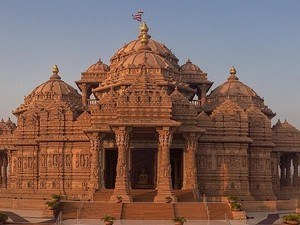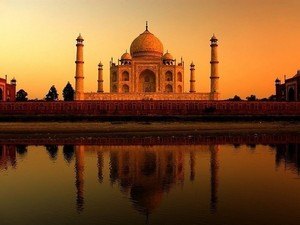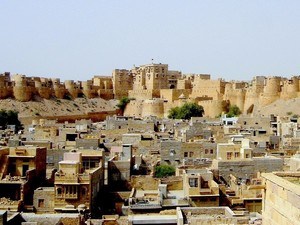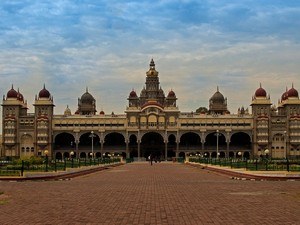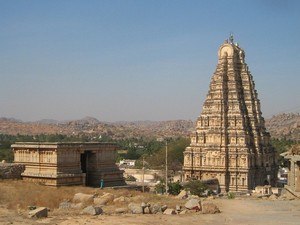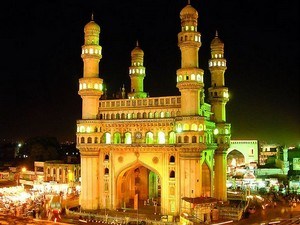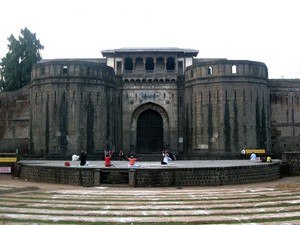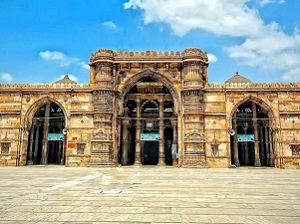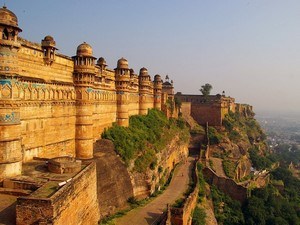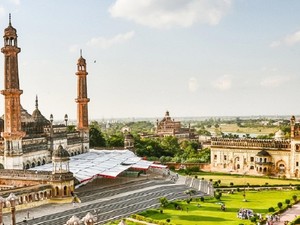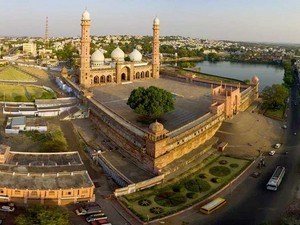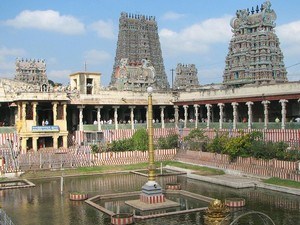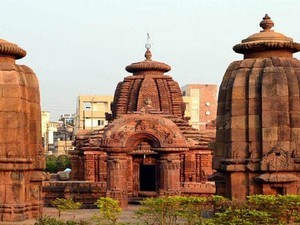1
DAY 1 : TRAVEL TO JAIPUR & SIGHTSEEING
DAY 1 : TRAVEL TO JAIPUR & SIGHTSEEING
 Sightseeing
Sightseeing
Leisure / No Sightseeing
At a distance of 13 km from Jaipur Junction Railway Station, Amer Fort or Amber Fort is located in Amer near Jaipur. It is one of the best-preserved forts in Rajasthan, and among the prime place to include in Jaipur packages.
Amber was founded by the Meenas in 967 AD and they dedicated the town to Amba, the Mother Goddess. Around 1037 AD, Amber was conquered by Kachhawa Rajputs and ruled from the 11th to the 18th century, until the capital was moved from Amer to Jaipur. The Amber Fort was built by Raja Man Singh in 1592 AD and it was further expanded by successive rulers. Man Singh was one of the trusted generals of Emperor Akbar and one among the Navaratnas of his court. Later in 1727 AD, Sawai Jai Singh II moved the capital from Amber to Jaipur.
The architecture of Amer Fort is influenced by both Hindu and Muslim styles. Among the famous tourist places in Jaipur, Amer .....
 Duration of visit: 2 Hours
Duration of visit: 2 Hours
 Timings: Timings: 8 AM to 5.30 PM
Timings: Timings: 8 AM to 5.30 PM
At a distance of 15 km from Jaipur Junction Railway Station and less than 1 km (by walk) from Amer Fort, Jaigarh Fort is situated on a cliff called Cheel ka Teela (Hill of Eagles) of the Aravali range. It overlooks the Amber Fort and the Maota Lake. This is one of the best forts in Jaipur and also among the famous Jaipur tourist places which is commonly visited from Amber Fort.
The fort was built by Jai Singh II in 1726 to protect the Amber Fort and was named after him. Amer was once known as Dhundhar, the old and original fort of Amer was ruled by clan of Meenas and later it was ruled by Kacchwa Rajputs. The Jaigarh fort was actually a defensive structure rather than a palace. Jaigarh Fort and Amber Fort are connected by underground passages.
The Jaigarh Fort is similar in structural design to the Amer Fort. It has a length of 3 km and width of 1 km. .....
 Duration of visit: 1-2 Hours
Duration of visit: 1-2 Hours
 Timings: 9 AM to 4.30 PM
Timings: 9 AM to 4.30 PM
At a distance of 11 km from Jaipur Junction Railway Station and 8 km from Amer Fort, Jal Mahal or the Water Palace is a palace located in the middle of the Man Sagar Lake in Jaipur. This is one of the biggest artificial lakes in Jaipur. The lake used to be a bird watcher's paradise in the past and was a favorite ground for the Rajput kings of Jaipur for royal duck shooting parties during picnics.
Jal Mahal was built in 18th century by Sawai Madho Singh I. Jal Mahal was constructed for serving the purpose of a summer resort for his family and guests. The palace was renovated and expanded in the 18th century by Madho Singh II. The Jal Mahal palace is considered an architectural beauty built in the Rajput and Mughal styles of architecture. It provides a picturesque view of the lake from the Man Sagar Dam and the surrounding Nahargarh hills. The palace was built using red sandstone. It is a five storied building out of which four floors remain under water when the lake is full and the .....
 Duration of visit: 30 Mins - 1 Hr
Duration of visit: 30 Mins - 1 Hr
 Timings: 9 AM to 5 PM
Timings: 9 AM to 5 PM
At a distance of 11 km from Jaipur Junction Railway Station, Khole Ke Hanuman Ji is an ancient temple situated at Laxman Dungri in Jaipur. This temple is considered to be one of the famous temples in Jaipur, and among the must include places in Jaipur tour packages.
Khole Ke Hanuman ji Temple is dedicated to the Lord Hanuman. The inner sanctum of the temple is quite large and can accommodate 500 devotees. The temple is situated on a hillock and devotees have to walk around 1 km to reach the temple. The temple has an attractive entrance archway. The temple is known for its magical power and it is believed that the wishes of the devotees are always fulfilled. It is one of the popular Jaipur places to visit, especially for religious people.
The natural view of Aravali hill is magnificent from the temple and surrounding places. A large number of tourists .....
 Duration of visit: 1 Hour
Duration of visit: 1 Hour
 Timings: 6 AM to 8.30 PM
Timings: 6 AM to 8.30 PM
2
DAY 2 : AJMER & PUSHKAR SIGHTSEEING
%%Itinerary_Title_Day2%%
 Sightseeing
Sightseeing
At a distance of 1 km from Ajmer Junction Railway Station, the Dargah of Moinuddin Chishti, also known as Ajmer Sharif Dargah or Ajmer Sharif, is an international waqf situated at the foot of the Taragarh hill in Ajmer town of Rajasthan. It is one of the most popular places of pilgrimage in Rajasthan, and among the top Ajmer places to visit.
Ajmer Sharif is the tomb of Khwaja Moinuddin Chishti. The Sufi saint is known to have come from Persia and died in 1236 CE at Ajmer. He was known for his noble teachings and peace. He devoted his life to the service and welfare of the poor and downtrodden. It is most the popular and important Muslim pilgrimage site in India. Ajmer Sharif is famous for fulfilling the wishes of the devotees. People from all the communities come here and pay homage in the dargah of Khwaja Moinuddin Chishti at Ajmer as part of Ajmer tour.
The .....
 Duration of visit: 3 Hours
Duration of visit: 3 Hours
 Timings: 5 AM - 9 PM in winter & 4 AM - 10 PM in summer
Timings: 5 AM - 9 PM in winter & 4 AM - 10 PM in summer
At a distance of 500 m from Ajmer Dargah Sharif and 1.5 km from Ajmer Junction Railway Station, Adhai Din Ka Jhonpra is an ancient mosque situated near Dargah Sharif in Ajmer town of Rajasthan. It is one of the oldest mosques in India and also the oldest surviving monument in Ajmer. The site is now maintained by the Archaeological Survey of India.
Adhai Din Ka Jhopra, literally means 'shed of two and a half days', was built by Qutbuddin Aibak, the first Sultan of Delhi. The site of Adhai Din Ka Jhopra was originally a Sanskrit college commissioned by Vigraharaja IV, a king of the Shakambhari Chauhan dynasty. Based on a tablet found at the site, the original building must have been constructed sometime before 1153 CE. It was partially destroyed and converted into a mosque by Qutbuddin Aibak on the orders of Muhammad Ghori in 1192 CE. It was completed in 1199 CE and further beautified by Iltutmish of Delhi in 1213 CE.
Adhai Din Ka Jhonpra is an early example of the Indo-Islamic .....
 Duration of visit: 30 Mins
Duration of visit: 30 Mins
 Timings: 7 AM - 6 PM
Timings: 7 AM - 6 PM
At a distance of 1 km from Ajmer Junction Railway Station and 1.5 km from Ajmer Dargah Sharif, Nasiyan Temple is a Jain temple located at Prithviraj Marg in Ajmer town of Rajasthan. Popularly known as Soni Ji Ki Nasiyan, the Jain temple is one of the best Jain Temples in Rajasthan and among the famous Ajmer tourist places.
Nasiyan Temple is dedicated to Lord Rishabhdev, the first Jain Tirthankara. Built by Seth Moolchand Soni in 1865 CE, the temple belongs to the Digamber sect of Jainism. The name of the temple is Siddhkoot Chaityalaya and is also known as 'Red Temple' as it is built of red sand stone. After the Swarna Nagari was added to the temple in 1895 CE, it popularly began to be called as Sone ka Mandir emphasizing the golden structure.
The temple has been constructed in red stone brought from Karauli, following the typical South Indian style of temple architecture. The gigantic gateway, also .....
 Duration of visit: 30 Mins - 1 Hr
Duration of visit: 30 Mins - 1 Hr
 Timings: 8.30 AM - 4.30 PM
Timings: 8.30 AM - 4.30 PM
At a distance of 1.5 km from Pushkar Bus Station, Pushkar Lake or Pushkar Sarovar is a sacred lake located in the town of Pushkar in the Ajmer district of Rajasthan. Pushkar Lake is one of the most sacred lakes in India and among the most popular Pushkar places to visit.
The history of Pushkar Lake dates back to the 4th Century BC. Though the creation of Pushkar Lake as an artificial lake started in the 12th century when a dam was built over the Luni River. Among the Hindus, it is believed that the lake was created with the lotus flower dropped from the hand of Lord Brahma. Guru Govind Singh is said to have given a sacred speech of the Guru Granth Sahib at the banks of the Lake. The Rajput rulers of Amber, Bundi, Bikaner, and Jaisalmer made great efforts to restore the lake and its surrounding temples. After that many kings of the different dynasties built ghats over the lake.
Pushkar Lake is one .....
 Duration of visit: 30 Mins - 1 Hr
Duration of visit: 30 Mins - 1 Hr
 Timings: 9 AM - 6 PM
Timings: 9 AM - 6 PM
At a distance of 1.5 km from Pushkar Bus Station, Brahma Temple is a Hindu temple situated in the sacred town of Pushkar in Rajasthan. This is one of the few temples dedicated to Lord Brahma in India and among the must-visit places during Pushkar trip.
The temple was dedicated to Lord Brahma, the creator of the universe. According to the Padma Purana, Lord Brahma was in search of a suitable place to perform a Yagna when the lotus was fell from his hand on the Earth. Miraculously a lake sprang up at the place where the Lotus touched the earth and Brahma considering it a good omen decided to perform his Yagna and named the town Pushkar. But when his wife Saraswati failed to join him, he married a local maiden Gayatri and completed the Yagna. On getting to know about this, an enraged Saraswati cursed Brahma that from this day forth he would be worshiped only in the land of Pushkar and nowhere else on Earth.
Although the structures .....
 Duration of visit: 30 Mins - 1 Hr
Duration of visit: 30 Mins - 1 Hr
 Timings: 6.30 AM - 1.30 PM & 3.30 PM - 8.30 PM
Timings: 6.30 AM - 1.30 PM & 3.30 PM - 8.30 PM
At a distance of 500 m from Pushkar Bus Stand, Rangji Temple is a Hindu Temple situated near Pushkar Lake in Pushkar town of Rajasthan. Rangji Temple is one of the famous temples of Pushkar and also one of the top places to visit in Pushkar.
Rangji Temple is dedicated to Lord Ranga, an incarnation of Lord Vishnu. It is believed that the temple was commissioned in 1823 by Seth Puran Mal Ganeriwal who was from Hyderabad. The temple of Rangji Ji reflects a mix of Mughal and Rajput architecture. The high-rising Gopuram also reflects South Indian architecture, and adds more charm to the whole temple.
This temple contains a principal shrine called the Vaikuntha Venkatesh, and eight other temples dedicated to Goddess Laxmi amongst others deities. Lord Rama, which is one of the incarnations of Lord Vishnu, resides in the sanctum sanctorum of the temple. Lord Krishna, Goddamaji and Sri Ramanujacharya are the other shrines present inside the temple complex. The temple houses an image .....
 Duration of visit: 30 Mins
Duration of visit: 30 Mins
 Timings: 6 AM - 7 PM
Timings: 6 AM - 7 PM
3
DAY 3 : JAIPUR SIGHTSEEING & TRAVEL TO DELHI
%%Itinerary_Title_Day2%%
At a distance of 5.5 km from Jaipur Junction Railway Station, City Palace is a beautiful palace complex situated in the heart of Jaipur City. It is one of the popular palaces in Rajasthan, and among the famous places to visit as part of Jaipur tour.
The palace was built between 1729 and 1732 AD by Sawai Jai Singh II. He planned and built the outer walls and later additions were made by successive rulers till the end of the 20th century. City Palace was the seat of the Maharaja of Jaipur, the head of the Kachhwa Rajput clan. Part of the palace currently houses a museum, though the major part is still a royal residence. It one of the most famous Jaipur tourist places.
The City Palace reflects Rajput, Mughal, and European architectural styles although it was designed according to Vaastushastra. The Palace .....
 Duration of visit: 1-2 Hours
Duration of visit: 1-2 Hours
 Timings: 9 AM to 5 PM
Timings: 9 AM to 5 PM
At a distance of 5.5 km from Jaipur Junction Railway Station, Jantar Mantar is located near City Palace and Hawa Mahal in Jaipur. It is one of the top tourist places in Jaipur City. This monument is the largest of the five astronomical observatories present in India. The other four astronomical observatories are located at Delhi, Varanasi, Mathura and Ujjain. It features the world's largest stone sundial, and is a UNESCO World Heritage site.
The Jantar Mantar was built by the Rajput king Sawai Jai Singh II and completed in 1738 AD. The name is derived from jantar means yantra and mantar means calculation. The Jaipur observatory was functional for seven years only, as the Maharaja was not very successful in deriving accurate, astronomical observations. It was later restored in the year 1901 and was declared as a national monument in the year 1948.
The .....
 Duration of visit: 30 Mins - 1 Hr
Duration of visit: 30 Mins - 1 Hr
 Timings: 9:30 AM to 4:30 PM
Timings: 9:30 AM to 4:30 PM
At a distance of 6 km from Jaipur Junction Railway Station, Hawa Mahal is one of the prime tourist places to visit in Jaipur city. The palace sits on the edge of the City Palace and extends to the Zenana (women's) chambers. Hawa Mahal is often represented in promotion of Jaipur Tourism. Jaipur is among the top places to visit near Delhi.
The renowned Hawa Mahal or the Palace of Winds was constructed in 1799 by Maharaja Sawai Pratap Singh as a continuation to the stunning City Palace. The main architect of this palace is Lal Chand Ustad and the palace is believed to have been constructed in the form of the crown of Krishna, the Hindu God.
Hawa Mahal was built in Rajputana architectural style. The palace is constructed of beautiful red and pink sandstone and it looks like a five storeyed Pyramid. The palace stands on a podium which is fifty .....
 Duration of visit: 30 Mins
Duration of visit: 30 Mins
 Timings: 9 AM to 4.30 PM
Timings: 9 AM to 4.30 PM
At a distance of 6 km from Jaipur Junction Railway Station, Albert Hall Museum is a museum situated in Ram Niwas Garden outside the city wall opposite the new gate in Jaipur. It is the oldest museum in Rajasthan, and one of the popular places of sightseeing in Jaipur.
The Albert Hall Museum is functioning as the State Museum of Rajasthan. The Hall was built by Maharaja Sawai Ram Singh II. The foundation stone of Albert Hall was laid during the visit of the Prince of Wales, Albert Edward to Jaipur in 1876 and it was completed in 1887. The building was designed by Sir Samuel Swinton Jacob and was opened as a public museum in 1887. It is also called the Government Central Museum. Maharaja Ram Singh initially wanted this building to be a town hall, but his successor, Madho Singh II, decided it should be a museum for the art of Jaipur.
It is a fine example of Indo-European architecture. The design of .....
 Duration of visit: 1-2 Hours
Duration of visit: 1-2 Hours
 Timings: 9 AM to 5 PM on all days. Closed on Friday
Timings: 9 AM to 5 PM on all days. Closed on Friday
BREAK FOR MEALS / HOTEL CHECK-IN | CHECK-OUT / SHOPPING / LEISURE
At a distance of 6 km from Jaipur Junction Railway Station, Birla Mandir is a Hindu temple located at the base of Moti Dongri Hill in Jaipur. The temple is sometimes also referred to as the Laxmi Narayan Temple. It is one of the major places to visit in Jaipur.
This marvelous temple was built during the year 1988 by Birla Group of Industries, one of the business tycoons of India. According to history, the Birla temple was built on the land given to the Birla family by the Maharaja.
The Temple is dedicated to Lord Vishnu (Narayan) and his consort Lakshmi. The images of Lakshmi and Narayan attract the attention, being made out from one piece of marble. Standing on a raised platform, Birla Temple is made out with the premium quality of white marble. The temple looks stunning, when it is brightly lit in the night. The three huge domes of the temple represent three different approaches to the religion. .....
 Duration of visit: 1 Hour
Duration of visit: 1 Hour
 Timings: 6 AM - 12 PM & 3 PM - 8:30 PM
Timings: 6 AM - 12 PM & 3 PM - 8:30 PM

